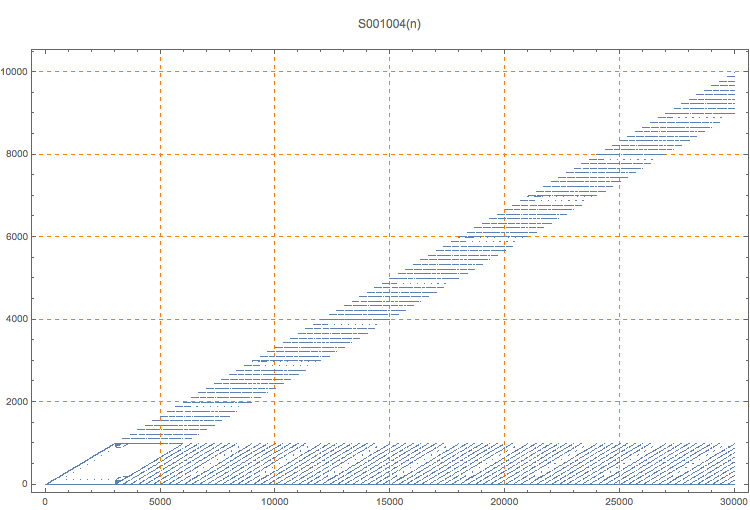Least triple of palindromes x <= y <= z such that n = x + y + z.
0, 0, 0, 0, 0, 1, 0, 0, 2, 0, 0, 3, 0, 0, 4, 0, 0, 5, 0, 0, 6, 0, 0, 7, 0, 0, 8, 0, 0, 9, 0, 1, 9, 0, 0, 11, 0, 1, 11, 0, 2, 11, 0, 3, 11, 0, 4, 11, 0, 5, 11, 0, 6, 11, 0, 7, 11, 0, 8, 11, 0, 9, 11, 1, 9, 11, 0, 0, 22, 0, 1, 22, 0, 2, 22, 0, 3, 22, 0, 4, 22
0
Sequence S000698 gives the number of palindromic triples that sum to n. This sequence gives the first such triple for each n. Note that x is quite often 0, which is apparent in S001005 and S001006.
T. D. Noe, Plot of 10000 triples
T. D. Noe, Table of 10000 triples
Javier Cilleruelo and Florian Luca, Every positive integer is a sum of three palindromes, arXiv 1602.06208 (Feb 19 2016)
(Mma) palindrome[b_Integer, n_Integer, del_] := Module[{c = IntegerDigits[n, b], d}, d = If[del, Join[c, Reverse[Most[c]]], Join[c, Reverse[c]]]; FromDigits[d, b]]; tp1 = Table[palindrome[10, n, True], {n, 99}]; tp2 = Table[palindrome[10, n, False], {n, 99}]; tp3 = Union[{0}, tp1, tp2]; t = Table[{}, {9999}]; cnt = 0; Do[n = tp3[[a]] + tp3[[b]] + tp3[[c]]; If[n <= 9999 && t[[n]] == {}, t[[n]] = {tp3[[a]], tp3[[b]], tp3[[c]]}; cnt++; If[cnt == 9999, Break[]]], {a, Length[tp3]}, {b, a, Length[tp3]}, {c, b, Length[tp3]}]; t = Join[{{0, 0, 0}}, t]
Cf. S000698, S001005, S001006.
nonn,base,tabl,nice
T. D. Noe, Apr 22 2017
